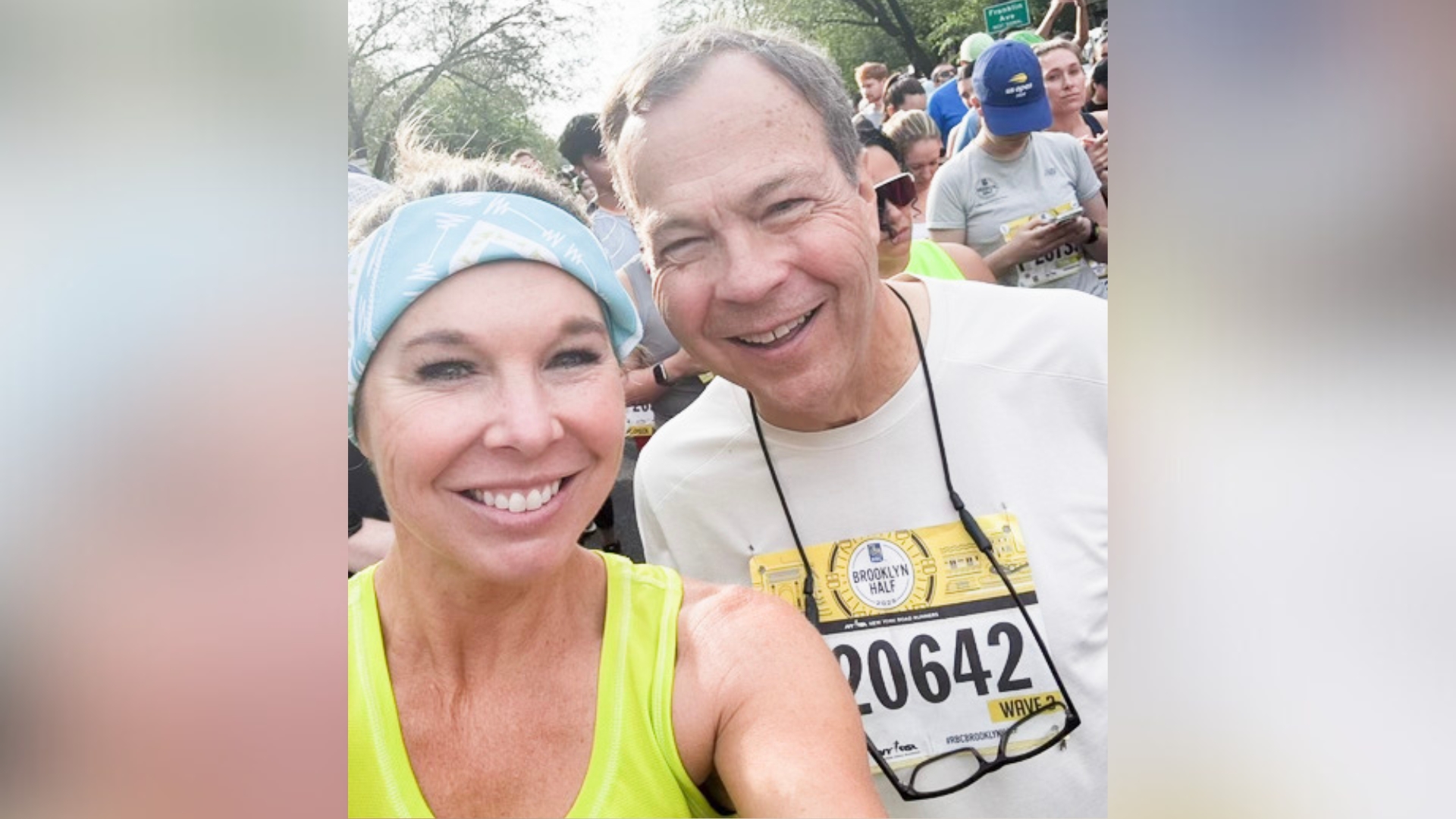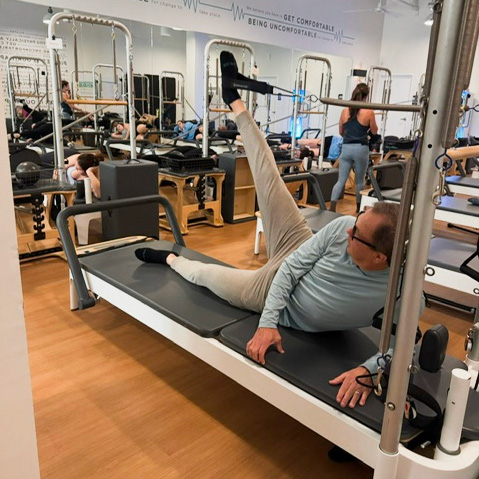A 72-year-old shares how Pilates helped him run a half-marathon injury-free, and the one move that helped him the most
It was a game-changer for a dad with a reputation for getting injured

Pilates has never been more popular and it’s not hard to see why. It can help you build strength, while also developing your posture, mobility and coordination.
It can also be incredibly effective at helping injury-prone runners to run pain-free.
This is what 72-year-old Frank discovered earlier this year, when he started attending his daughter Kamille McCollum’s reformer Pilates studio to prepare for a half marathon.
Doing reformer Pilates just once a week for a few months was a game-changer for Frank. It was the first time he’d trained for a race without getting injured.
“It always felt like everyone in my family thought, ‘Oh Dad’s injured again!’” Frank tells Fit&Well.
“I can’t think of any other training I’ve done where I didn’t end up hurting myself and losing time because of a muscle injury. This was the first time where it didn’t happen—and I’ve gotten older!”
Kamille, who’s the co-founder of the BODYBAR brand, tells me Pilates is one of the best styles of movement for people in their 60s and 70s. “As you get older, the stronger you can keep your core, the more endurance and balance you’re going to have, especially for running but also for playing with your grandkids and day-to-day things.”
Start your week with achievable workout ideas, health tips and wellbeing advice in your inbox.
Frank used the Pilates reformer, a piece of equipment that uses a sliding platform called a carriage, as well as springs which can be hooked onto the platform to add resistance. “Reformer Pilates focuses on the stabilisation muscles, core and posture, which is key to good running form,” says Kamille.

“When I started doing Pilates, it felt like muscles I’d never targeted before were getting toned,” says Frank.
But you can easily recreate the benefits of reformer Pilates without any equipment. And Frank says there’s one exercise that he thinks was most beneficial to his training, and which you don’t need a reformer to do—the side lunge.
“We do a lot of single-leg, single-arm and core work,” says Kamille. “Everyone has a dominant side of the body, so doing things that challenge your balance on one leg ensures you're strengthening both sides of the body.”
For this reason, Frank did a lot of side lunges which strengthens and mobilizes the lower body. “You’re working through the back of the legs, the quads and working on your balance,” says Kamille. “You’re also getting a stretch into your inner thigh, which means you’re strengthening one leg while improving your flexibility in the other.”
“That side lunge exercise really worked me out—and I often didn't realize how much until I could feel it afterwards,” says Frank.
How to do a side lunge
In BODYBAR classes, people do a side lunge on the reformer, using the resistance of the platform to challenge the muscles responsible for hip stabilization, but Kamille says you can recreate this aspect at home by wearing socks on a hard floor, to make the surface unstable.
You could also try Pilates sliders, which are a great way to replicate the benefits of the reformer.
- Stand with your feet roughly twice shoulder-width apart, and your hands clasped in front of your chest.
- Bend your right knee and lower to your right, keeping your left leg straight and your upper body still.
- Push through your right foot to almost return to the starting position, but stop before you stand up completely so your muscles remain engaged. Move straight into the next rep.
- Continue for 60 seconds then repeat on the other side.
Alice Porter is a freelance journalist covering lifestyle topics including health, fitness and wellness. She is particularly interested in women's health, strength training and fitness trends and writes for publications including Stylist Magazine, Refinery29, The Independent and Glamour Magazine. Like many other people, Alice's personal interest in combining HIIT training with strength work quickly turned into a CrossFit obsession and she trains at a box in south London. When she's not throwing weights around or attempting handstand push-ups, you can probably find her on long walks in nature, buried in a book or hopping on a flight to just about anywhere it will take her.
You must confirm your public display name before commenting
Please logout and then login again, you will then be prompted to enter your display name.